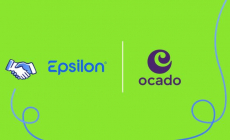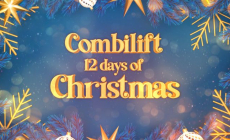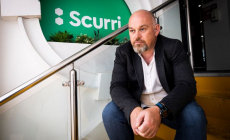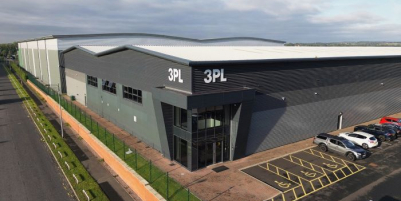-
Women Leading the Way in the UK Material Handling Industry - 2 days ago
-
DATA ANALYSIS – THE FOUNDATION OF EVERY PEAK SEASON - December 5, 2025
-
Creative education specialists Creative Hut give 3PL full marks for onboarding excellence - December 5, 2025
-
Unlimited Industries raises $12M to build the AI construction company that will power America’s future - December 4, 2025
-
Etaily lands strategic investment from Japan’s SMBC – bringing total funding to $24M for Social Commerce enablement platform - December 4, 2025
-
Prism eLogistics and Brand Angels Partnership Gives Brands the Full Package - December 3, 2025
-
New data shows Tesla in danger of losing its way as European consideration to buy Chinese cars jumps 16% in 12 months - December 3, 2025
-
QUECLINK DEVELOPS SATELLITE-ENABLED VEHICLE TRACKING FOR UNINTERRUPTED TRANSPORT MANAGEMENT - December 3, 2025
-
Ocado Ads partners with Epsilon for people-based precision - December 3, 2025
-
Combilift Unveils the 2025 Christmas video “Twelve Days of Christmas” – with a Twist! - December 1, 2025
There has been a steep rise in incidents of aggression and harassment towards commercial fleet drivers from both opportunistic thieves and members of the public in the past 12 months. This was the opinion of leading fleet, health and safety, and technology specialists at a recent event organised by SureCam and PeopleSafe to discuss driver safeguarding and lone worker protection.
“We are seeing significantly more risk associated with working alone and in isolated areas, with London a particular hotspot for our fleet drivers,” explained Lee Jackson, Group Head of Plant & Transport and Board Director at Association of Fleet Professionals. “Incidents are occurring on a frequent basis, especially during the darker months, as opportunist thieves target vehicles and advanced equipment used by our mobile team. We are constantly looking at ways to deter this threat, undertake risk assessments, and ultimately put in place processes to minimise the dangers to our people.”
However, it is not just the threat from thieves that is on the increase, with growing aggression towards fleet drivers who are simply going about their daily routine. According to Mark Ryder, Chief Commercial Officer of Peoplesafe: “We are experiencing a greater volume of raised alerts to our alarm receiving centre. Post pandemic we have seen a real change in people’s tolerance to other road users, which has resulted in a major increase in road rage. This lack of patience and understanding can lead to verbal and physical harassment for perceived disruption where vehicles are making a delivery or simply manoeuvring.”
Philip Read, Head of Safety, Health, Risk & Resilience at G4S added: “While serious incidents within our health and patient transport services, as well as elsewhere in the business, are often sporadic, they are on the rise and can represent a significant threat to our drivers and passengers. The safety of our staff and patients is paramount, and with many of our drivers single-crewed and working autonomously, so are challenge is how we address this issue and provide the level of lone worker protection needed?”
The expert panel considered what cultural and organisational shifts were occurring within the fleet sector to foster a safer work environment for lone workers. Measuring risk to identify areas of weakness and the threats that exist was pinpointed as critical when creating an effective mitigation plan. It was clear from the discussions that communication and engagement was a key part of this process to share information and experiences, with back to the floor and ride along sessions, hazard reporting, safety tours and training all mentioned as effective tools.
In response to the situation, commercial fleets are also looking at how technology can help safeguard drivers that are working alone, out of hours and in remote locations, said Sam Footer, Director of Partnerships at SureCam. “Employee safety and wellbeing has come to the fore in recent years – particularly in fleet sectors such as logistics, utilities, highways and construction – and many businesses acknowledge that they need more robust processes to support their mobile teams both in and outside the vehicle. Every organisation has different needs to address, but what is consistent is the demand for an affordable, easy to implement and simple to use technology solution, underpinned by a clear driver protection strategy.”
There was a consensus that cutting-edge technology, such as dash cameras integrated with personal safety apps, had a major role to play in ensuring fleet drivers received the protection needed. “We need to allow fleet drivers to do their job without risk or being threatened, and by giving them this added support, it will contribute to them feeling less vulnerable and more confident,” concludes Jackson.

































